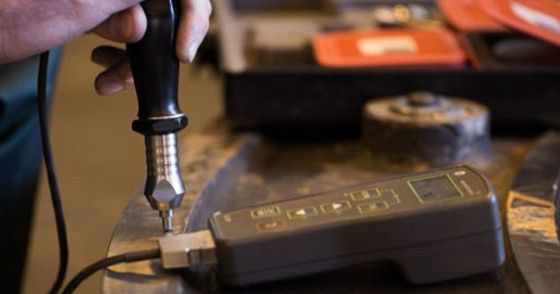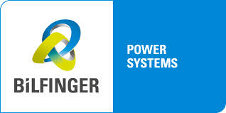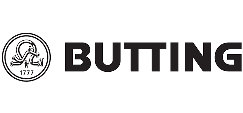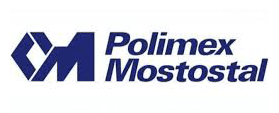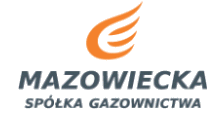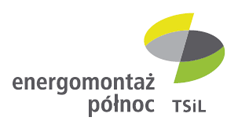Portable Hardness Testing (HT)
Portable Hardness Testing — image gallery
Why choose us?
- We deliver on our promises – when we say we’ll do something, we do it!
- Flexible service with quick turnaround times
- Independent and impartial testing
- Successful track record of delivering NDT services to various industries including large-scale industrial projects for global clients
- Highly trained and certified, multi-disciplined specialists
- Modern and always well-calibrated equipment
- Testing performed according to the written procedures approved by a level III NDT engineer
- Quality of service verified and confirmed by the approvals of the independent certification bodies
- Always ready to answer questions on testing and quality assurance
Service Information
Portable Hardness Testing
Portable hardness testing is used when a test object is too large to be examined in a testing lab. It is useful on-site, for example, for checking that the correct heat treatment has been carried out on welded items or that welded joints comply with the hardness limits specified in the norms or by respected industry bodies. Portable hardness testing techniques are quick and economical.
Hardness testing of metals is conducted so that one may correlate the results with another material property of interest, such as tensile strength or resistance to abrasion. Too soft, and a material may not be strong enough for its intended purpose. Too hard, and it may be brittle and subject to cracking.
Many codes and specifications specify hardness testing of materials in the field after such activities as oxyacetylene cutting, cold bending, post weld heat treatment etc. The hardness of a material, a weld or a heat-affected zone is a decisive parameter that can determine the remaining lifetime of a material and its deterioration due to overheating.
Our personnel has the required experience level and expertise to professionally perform any field hardness testing. They use the latest GE Portable Hardness Testing Technology to provide the most accurate field hardness readings. All hardness tests are performed according to the verified and approved written procedure which takes into account special considerations for equipment calibration, surface preparation, removal of unrepresentative material (paint, oxides, decarburized layer) and the methodology of taking the readings, which are very important in demanding applications like hardness testing of the P91 material grade. The use of modern technology, according to our procedure guarantees reliable measurements.
LBNiW provides field hardness testing services by Ultrasonic Contact Impedance (UCI) method and rebound Leeb method (Equotip). We utilize portable hardness techniques to inspect ferrous and non-ferrous metals, and their alloys, welds, weld heat affected zones (HAZ), castings and forgings, machined parts, stress relieved material, and in-service components like piping, pressure vessels, or structural steel.
Hardness Testing by Ultrasonic Contact Impedance (UCI)
In conventional workbench hardness testing, the hardness value is determined optically by the size of the indentation in the material generated by a certain test load, after the indenter has been removed. In the UCI method, however, the size of the produced indents are not determined optically.
The UCI method utilizes a probe containing a rod with a Vickers diamond mounted on one end. The rod oscillates at a frequency of approximately 70 KHz and when the diamond is pressed into the test material, the frequency is shifted from this base value due to the properties of the material being examined. The frequency shift is proportional to the area of contact, which is the area of indentation generated by the Vickers diamond. The instrument software compares the two frequencies and mathematically converts this to a Vickers (HV) value.
With UCI method, the material under test must be fine-grained and homogeneous due to the small area being examined. The surface condition must also be polished. Therefore, raw castings and forgings are generally ruled out since the surface hardness varies from one location to the next. These are comparative testers and for that reason, calibration on a material with a similar Young’s modulus to the test material must be carried out before testing.
The UCI method is well suited for the measurement of hardness in the heat affected zone of welds in thinner materials. Because of the small footprint of the Vickers diamond, it is quite effective at measuring up to the toe of a weld. Other portable testers have a larger footprint and this limits their ability to measure in this area.
Recommended minimum wall thickness = 6mm
Hardness Testing by Rebound Method (Equotip)
Developed in the mid-1970s, the Leeb method became the first widely accepted portable electronic tester for measuring the hardness of very large components located in the field in a matter of seconds. The “rebound” name comes from the basic nature of the test. An impact body inside of the device probe is released at a specific velocity onto the test specimen. The resulting rebound velocity is compared to the original velocity and a Leeb hardness (HL) is obtained and displayed digitally on the device. This value can then be converted by the software to display conventional HRC, HV or HB scales along with others.
At the time, this tester was considered to be revolutionary. Unfortunately, many of these devices were purchased for use in applications where the method is limited and this created confusion regarding the accuracy of the device. When used in the appropriate application these devices are quite accurate, very simple to use and the repeatability is high.
The most critical variables affecting the test are part thickness and mass. As described above, there is an impact body that is released at a given velocity onto the surface of the object under test. If the material thickness is too thin, with little mass, then the material actually flexes at impact. This creates an error in the rebound velocity and, in turn, affects the reading obtained. The values will be very inconsistent in this situation.
Large castings, steel rolls, large forgings and other heavy wall components can be examined very reliably with this device.
Recommended minimum wall thickness = 20mm
Selecting the Method
| Application | UCI Method | Rebound Method |
|---|---|---|
| Solid parts | Well suited | Very well suited |
| Coarse grain materials | Not recommended | Very well suited |
| Steel and Aluminium cast alloys | Sometimes suited | Very well suited |
| HAZ regions in welds | Very well suited | Not recommended |
| Tubes, wall thickness ≥ 20mm | Very well suited | Very well suited |
| Tubes, wall thickness < 20mm | Very well suited | Not recommended |
Advantages of Portable Hardness Testing Method
- Fast results
- Field ready
- Highly portable tools can be used in most locations
- Relatively inexpensive
Disadvantages of Portable Hardness Testing Method
- The operator can greatly affect the result if the proper technique is not used to obtain the reading.
- The UCI method requires a surface polished to nearly a mirror finish
- The Equotip should only be used on parts with a thickness of 20 mm or greater
Relevant Codes & Standards
Application Specific Standards
- EN 12952-6, Water-tube boilers and auxiliary installations Inspection during construction; documentation and marking of pressure parts of the boiler
- EN 12953-5, Shell boilers. Inspection during construction, documentation and marking of pressure parts of the boiler
- EN 13480-5, Metallic industrial piping Inspection and testing
- EN 13445-5, Unfired pressure vessels Inspection and testing
- EN 12732, Gas infrastructure. Welding steel pipework. Functional requirements
- EN 14015, Specification for the design and manufacture of site built, vertical, cylindrical, flat-bottomed, above ground, welded, steel tanks for the storage of liquids at ambient temperature and above
- EN 1090-2, Execution of steel structures and aluminium structures Technical requirements for steel structures
- EN 14197-2, Cryogenic vessels. Static non-vacuum insulated vessels Design, fabrication, inspection and testing
- EN 13458-2, Cryogenic vessels. Static vacuum insulated vessels Design, fabrication, inspection and testing
- EN-ISO 9606-1, Qualification testing of welders. Fusion welding Steels
- EN-ISO 9606-2, Qualification test of welders. Fusion welding Aluminium and aluminium alloys
- EN ISO 15614-1 Specification and qualification of welding procedures for metallic materials. Welding procedure test. Arc and gas welding of steels and arc welding of nickel and nickel alloys
- EN-ISO 17635, Non-destructive testing of welds. General rules for metallic materials
Standards Specific to Portable Hardness Testing
- EN ISO 6507-3, Metallic materials. Vickers hardness test. Calibration of reference blocks
- EN ISO 9015-1, Destructive tests on welds in metallic materials. Hardness testing. Hardness test on arc welded joints
- ASTM A1038 – 13, Standard Test Method for Portable Hardness Testing by the Ultrasonic Contact Impedance Method
- ASTM A956 Standard Test Method for Leeb Hardness Testing of Steel Products
- ASTM E140 — 12be1 Standard Hardness Conversion Tables for Metals Relationship Among Brinell Hardness, Vickers Hardness, Rockwell Hardness, Superficial Hardness, Knoop Hardness, Scleroscope Hardness, and Leeb Hardness
- EN-ISO 16859-1, Metallic materials — Leeb hardness test — Part 1: Test method
- EN-ISO 16859-2, Metallic materials — Leeb hardness test — Part 2: Verification and calibration of the testing devices
- EN-ISO 16859-3, Metallic materials — Leeb hardness test — Part 3: Calibration of reference test blocks
- EN-ISO 18265, Metallic materials — Conversion of hardness values
Our HT Resources
We hold the following portable hardness testing equipment:
- 1 GE Krautkramer MIC 10DL UCI hardness tester with 98N test probe
- 1 Equotip Piccolo 2
